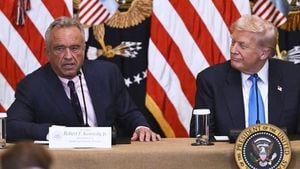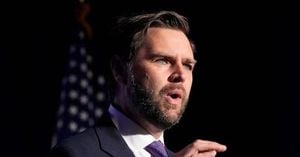Intel, once the epitome of technological dominance, is now under intense scrutiny following the departure of its CEO, Pat Gelsinger. This shakeup has not only sent shockwaves through the company but also raised questions about the future of the semiconductor industry, particularly for rivals like Samsung Electronics.
Gelsinger took the helm at Intel with high hopes, positioning himself as the savior to revitalize the chip-making giant. He introduced the IDM 2.0 strategy aimed at transforming the company and fostering external partnerships. Initially, analysts were optimistic about his direction and investments. Gelsinger's enthusiasm was palpable as he prepared the narrative of Intel reclaiming its glory. He even laid out ambitious plans to expand the company’s foundry business, which included hefty investments totaling nearly $45 billion over two years.
Despite the intentions, the reality turned out to be starkly different. Under Gelsinger's lead, Intel missed the boat on mobile computing and artificial intelligence (AI) advancements, two tech revolutions reshaping the industry. This misstep proved costly, pushing Intel's stock down about 68% from its peak, signaling serious investor concerns about its competitiveness. To compound the issues, the firm recently lost its spot on the Dow Jones Industrial Average to Nvidia, marking the end of its 25-year tenure on the index.
Detractors within Intel’s board began to express dissatisfaction with Gelsinger's strategies especially as the company faced staggering fiscal losses. Reports indicated board tensions resulting from Gelsinger's focused but unpopular investments, driving home the point of discontent. His significant investments, meant to modernize Intel's fabrication capabilities, yielded losses of over $12 billion, raising alarms.
Under his leadership, Gelsinger tried to pivot past the traditional CPU market to stake Intel’s place within the burgeoning AI market through Gaudi processors; yet, market feedback was lukewarm at best. The anticipation of soaring success proved to be more wishful thinking than reality.
Further exacerbation came from Gelsinger's challenges with the company's foundry operations, which were losing billions. Intel's strategy to compete with fab giants like Taiwan Semiconductor Manufacturing Company (TSMC) backfired, leading to massive operating losses described as unsustainable by industry experts. With cumulative foundry losses reaching over $5 billion by mid-2024, the writing on the wall seemed all but inevitable.
Following Gelsinger’s abrupt resignation, industry observers drew parallels between Intel’s struggles and the current state of affairs at Samsung Electronics. Like Intel, Samsung is grappling with its own challenges within the semiconductor and consumer electronics space. Although Samsung is primarily recognized for its memory chip production, it too faces intense competition from rivals, particularly SK Hynix. This competition has overshadowed its market position, which is now reliant on restructuring efforts led by veteran board member Young-Hyun Jun.
Taking the reins amid such uncertainty, Jun's leadership strategy diverges from Gelsinger's. He has chosen to concentrate on returning the memory division to competitiveness instead of chasing expansive foundry investments. The focus has shifted to restoring the legacy and market power of Samsung's core memory business, indicative of the company’s adaptive strategy amid shifting market dynamics.
Industry insiders remarked on the significant differences between Intel and Samsung, emphasizing how their distinct business models and core competencies necessitate different reform strategies. While Gelsinger pushed toward aggressive growth and investment, Jun appears to be pursuing stability as his guiding principle.
This leadership shakeup has led many to wonder if the semiconductor market’s current turbulence is merely the beginning of lasting shifts within such companies. With AI booming and the industry rapidly changing, aligning leadership with innovative, adaptable strategies is becoming more important than ever for tech giants.
The market watches closely as these companies strive to navigate the post-Gelsinger era at Intel and the dawn of a new chapter at Samsung. The lessons from this turbulence are clear: adaptability, responsiveness, and innovation may very well determine which companies can survive and thrive amid these monumental transitions.



